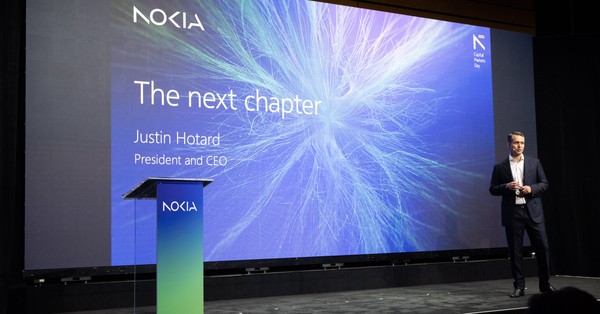Verizon layoffs: scope, timing, and what it means
Verizon will cut more than 13,000 roles as part of a broader restructuring aimed at simplifying operations and resetting its cost base for the next phase of growth.
Layoff scope, WARN timelines, phased rollout
The reduction represents roughly 13% of Verizon’s reported ~100,000 full-time workforce and about one-fifth of its non-union management ranks, according to figures shared alongside the announcement. The timing will vary by state due to WARN Act requirements, which mandate advanced notice for mass layoffs, so impacts will roll out in waves rather than a single date.
Outsourcing cuts, store franchising, reskilling fund
In parallel, Verizon plans to curb outsourcing and other external labor spending, convert 179 company-owned retail stores to franchise operations, and shutter one store. The company has also created a $20 million reskilling and career transition fund to support affected employees with digital training and job placement—modest relative to the scale of the cuts, but directionally aligned with a pivot toward AI-enabled and software-centric operations.
Why now: competitive pressures and 5G monetization
The restructuring reflects subscriber headwinds and a need to rebalance costs as 5G investment priorities shift from buildout to monetization and automation.
Subscriber headwinds and digital shift
Postpaid phone net adds have been under pressure amid aggressive promotions and share gains from cable MVNOs, while retail distribution is migrating online via eSIM and digital onboarding. These factors, combined with a slower growth outlook for traditional mobility, are forcing incumbents to rethink go-to-market models and support costs.
Opex efficiency and AI-driven operations
With the initial 5G capex surge easing, operators are concentrating on opex efficiency and capital-light growth. Verizon’s moves suggest a pivot toward leaner structures, deeper automation across care and network operations, and tighter control of third-party spend. The company is also pursuing a $20 billion acquisition of Frontier Communications slated to close early next year, indicating a parallel bet on fiber economics; that ups the stakes for integration discipline and synergy capture.
What this means for customers and partners
Expect near-term disruption at the edges, but also clearer signals of where Verizon will place its bets on customer experience, automation, and fiber-led growth.
Enterprise/public sector: SLAs, continuity, redundancy
Account coverage and service delivery models may change, particularly for managed services, SD-WAN/SASE, private wireless, and fixed wireless access. Proactively review SLAs, escalation paths, and support entitlements; document key contacts; and negotiate continuity clauses for ongoing projects. If you rely on single-carrier access, validate redundancy and failover across transport and mobility while teams transition.
Vendors/integrators: automation value and open frameworks
Reduced outsourcing signals a shift toward internal platforms and automation, compressing traditional labor-based contracts. Align offers to quantifiable opex takeout—AI-driven assurance, closed-loop service operations, cloud-native 5G core lifecycle tooling, and intent-based orchestration. Map to open frameworks such as TM Forum ODA, ORAN Alliance interfaces, GSMA Open Gateway APIs, and MEF LSO for NaaS to accelerate integration and time-to-value.
Retail: franchising impacts and digital-first sales
Franchising 179 stores lowers fixed costs and can improve local agility but introduces variability in customer experience. Expect a stronger push to digital sales and self-service, with in-store roles concentrating on complex device migrations, enterprise-liable accounts, and SMB solutions where assisted sales still convert best.
Talent and AI: building a software-first workforce
The talent mix is shifting from manual workflows to AI-enabled, cloud-native operations and data-rich customer experience.
Priority skills: AIOps, SRE, data engineering, APIs
Expect hiring and upskilling in AI/ML operations (AIOps), network data engineering, observability/telemetry, SRE practices for cloud-native network functions, API product management, and digital care. GenAI and automation will increasingly handle triage, troubleshooting, and guided care; human roles will move up-stack to exception handling and journey design.
Governance, WARN scheduling, and field-force scope
The focus on non-union management underscores the structural lens of this program and may limit direct network field force impacts in the near term. Staggered state notifications under the WARN Act will shape local execution, so regional partners should anticipate timing variations in coverage and decision-making.
2025 watchlist: execution, metrics, and integration
Execution quality will determine whether Verizon translates workforce reductions into better customer outcomes and durable cost advantages.
Metrics: churn, NPS, opex, FCR, MTTR
Track the cadence of store conversions, customer satisfaction and NPS in affected markets, postpaid phone churn, and operating expense run-rate reductions against guidance. Watch for tangible improvements in first-contact resolution and mean time to repair as automation scales.
M&A and fiber: Frontier integration and API exposure
Monitor closure and integration of the Frontier Communications deal and its implications for fiber passings, wholesale strategy, and convergence with fixed wireless access. On the network roadmap, watch 3GPP Release 18/19 feature adoption, early network slicing offers for enterprise, and exposure of network capabilities through standardized APIs that enable developer ecosystems.
Industry impact: telco restructuring and consolidation
Large-scale restructuring at Verizon could catalyze parallel actions across AT&T, T-Mobile, cable MVNOs, and Tier-2 providers—particularly in outsourcing, retail footprint, and AI operations—compressing vendor pipelines and accelerating consolidation in services.
Bottom line: mitigate risk and modernize
Treat this as both a transition risk to manage and an opportunity to renegotiate value, modernize operations, and de-risk your connectivity portfolio.
Immediate steps: coverage checks, SLAs, redundancy
Confirm account and support coverage; review SLAs and continuity provisions; stress-test redundancy across mobility and WAN; and use renewal windows to secure pricing, service credits, and performance guarantees tied to automation outcomes.
Mid-term: AI-first partners, fiber density, programmable networks
Prioritize partners that demonstrate AI-first service operations, open interfaces, and measurable opex impact; diversify last-mile and wireless options; and align your roadmap to where carriers are investing—digital channels, fiber density, programmable networks, and API-led services.









































